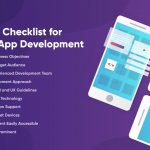IVR – Best Practices That Work
Rebecca wanted some information about the new investment plans she had opted for recently. With an intention to resolve her doubts she dialed the helpline number of the company. It was an IVR (Interactive Voice Response) based helpline number. She had already used IVRs before and had found it helped many a time but to her surprise this time she found it unhelpful and misleading. Rebecca’s annoyance was natural as her efforts went in vain and her query remained answerless.
So it can be said that an IVR should not become a question in itself but it should have answers. As IVRs do the very first interaction, so they create a big perspective in the customer’s mind. If the IVR itself is flawed then a promising customer can be lost too without any reason.
Here are a few aspects to keep a valued customer as Rebecca convinced through a helpful and effective IVR system.

Customer’s Time – Value It!
An IVR should pave the way to a solution. The customer’s time is always a priority. So an IVR having a very long menu deters the purpose. Keep it sharp and clean. It should start with an assuring interaction and should proceed with meaningful touchpoints. These touchpoints basically give the idea of the customer’s inclination and need. Getting it right in less time proves the purpose for the customer as well as the IVR.
Give them options to reach anywhere in the menu without much time taken. Don’t keep more than three options to choose from at any level. And six to eight seconds are enough to impart any information to the customer. The more value is given to the customer’s time, the more appreciative the service becomes. It’s like, if you have to go through the whole manual just to find some basic things then there is no use in keeping a manual guide for immediate solutions. IVRs are meant to provide some immediate solutions, not the opposite.
Misleading Menus with Marketing Jargons – Avoid It!
In the middle of a menu, a customer should not feel misled or clueless. In that case, he would look for a live agent. And IVR would become pointless. An efficient IVR is one in which callers get what they are looking for on their own.
Don’t bombard them with too much information at a time. Marketing activities with superfluous jargons should also be avoided during the hold time in an interaction. They deviate users unintentionally. So keep a clear and well-defined menu. It’s like if the index in a book is precise then any information will be found easily by the reader.
Customer Behaviour and Orientation – Observe It!
It is necessary to understand your customers well because every step they take is only meant to find a solution without much wastage of time. So observe them keenly.
For example, it has been found that on an IVR most of the customers rely on dial pad response than voice. Give them enough time to respond. Understanding them well helps to improve a glitch-free and productive IVR. The more your customers feel understood the more they feel connected with the service. And also in the process of understanding your customers, you can come out with innovations that could be very meaningful to develop a better IVR.
Experimentation and Acclimatization – Do It!
Experimentation is necessary but doesn’t make your customers guinea pigs. With increasing numbers of callers and their increasing demands, the scope of experimentation becomes less. But one should go ahead with it.
For example introduction of a new feature like ‘Text to Speech’ made it a lot easier for those customers who use the IVRs just to get some numerical results i.e. Medical reports or some research related data. Observe the need, accept the changes, and adapt accordingly. And with genuine need comes, innovation. They walk together if the motive behind it is customer satisfaction to the fullest.
Design and Innovation – Monitor It!
A user-friendly design is a prerequisite. IVR should act as a problem solver and not as a problem in itself. Important messages should be given priority. The menu navigation should be very simple.
Don’t give your customers a lot to handle. Avoid multi-levels in an option. Providing an option of a live agent in the main menu does not help because then most of the users would go for it. Don’t ask the users to repeat the process to reach a certain point. It’s frustrating. And keep the exit route always handy.
A good design is key and if it has some very good aesthetic sense then you one can be assured of better customer satisfaction.
Simplicity and Accuracy – Maintain It!
The relevance behind an IVR is its simplicity in providing a solution. And if the solution is accurate then the purpose gets fulfilled for both parties. When a customer comes on the IVR, the only thing his mind is boggled with is the query. He might be impatient as well. So a complicated structure just adds to that impatience. If more customers are hanging up in the middle of the menu, it means the IVR needs a review and seeks some changes. As we talked about the design, it should be simple enough to handle the details.
IVR – Identify, View, Respond
IVRs are an upfront medium to identify the needs of the caller. So a well-designed IVR proves to be a very good connection with the customers on the very first level. Once identified, it should be prompt enough to respond with the right set of instructions. So it is essential to measure and administer your IVR continuously. Make your IVR a helping hand, not the opposite.
Author Bio:

Vipul Srivastav is an Editor at Call Center Hosting. Clouds have always fascinated him. For the same reason he loves to explore and share his understanding and ideas related to cloud-based innovations. He writes about contemporary subjects as well. Follow him on Twitter and LinkedIn.















